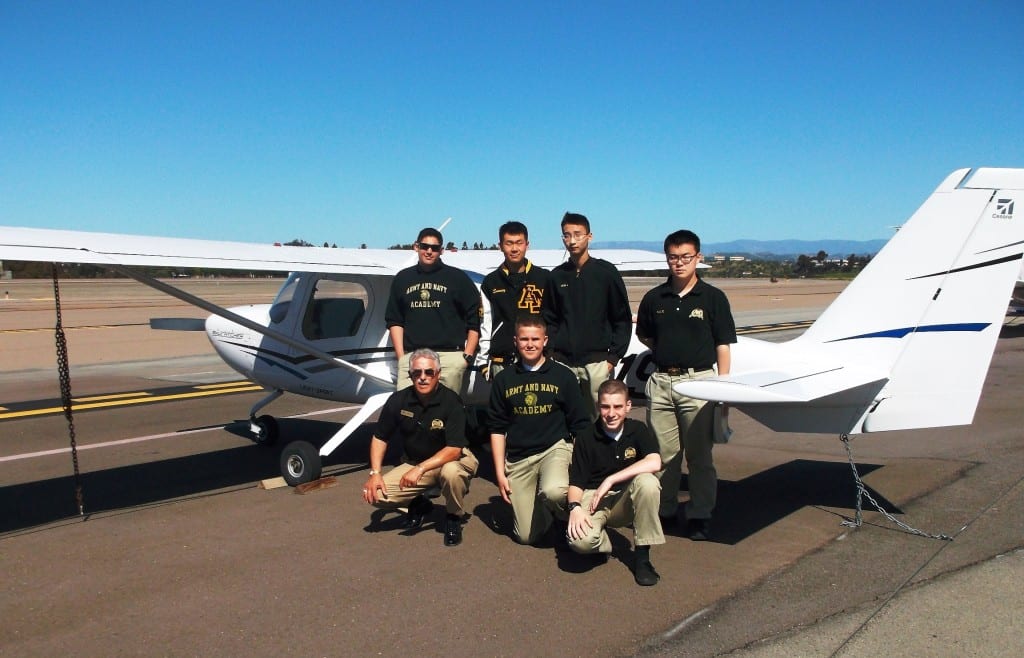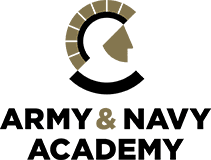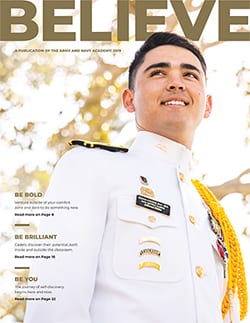 Are you interested in getting your pilot’s license in high school? It can be done at Army and Navy Academy, a college prep school geared for boys, as well as at some other boarding schools in the United States.
Are you interested in getting your pilot’s license in high school? It can be done at Army and Navy Academy, a college prep school geared for boys, as well as at some other boarding schools in the United States.
By attending a boarding school with a four-year aviation program, you can put yourself on a path to a great future in the field of aviation. Read more to see what steps need to be taken to get your pilot’s license, but before we dive into the tips, let’s examine some possible career directions in aviation.
In this emerging and high demand field, there are a number of choices including: commercial or professional pilot, private pilot, engineering (aerospace, manufacturing), and other related fields (unmanned aerial systems, cartography, airport architecture).
So, just where do you begin to acquire aviation skills while you are in high school? Here are some basic tips to bear in mind as you prepare for a career as a pilot or enter the field of aviation.
1. Enroll at a boarding school offering a full aviation program. One of the very few boarding schools with a program, Army and Navy Academy offers comprehensive four-year Warrior Aviation elective classes, alongside aviation clubs and activities. However, if you’re looking closer to home for a boarding school with student flight programs, you might want to check out the following: Marine Military Academy (TX), Culver Academies (IN), Admiral Farragut Academy (FL), and Randolph Macon Academy (VA), Windells Academy (OR), and Berkshire Academy (MA). They also offer aviation classes or full programs.
2. Explore career paths in aviation – Aviation offers a number of career pathways. If being an airline, commercial, private or military service pilot proves not to be your top choice, consider some of these possibilities mentioned earlier such as: operations supervisor, traffic controller, airport architecture, and engineering. You might even check into unmanned aerial systems (UAS) to explore the world of drones.
3. Map out your student flight goals in high school. If your boarding school offers a four-year aviation program, take all the required elective courses, but also maximize any aviation related clubs, campus activities, and excursions to broaden your knowledge. Set goals for your GPA in STEM classes, AP and honors classes, and co-curricular activities. If you can’t attend a boarding school, consider a summer camp that offers aviation.
4. Seek out pilots who can share their professional experience. Boarding schools have a reputation for hiring the best instructors in all subject areas, including elective courses. If your private school offers an aviation program, you will want to learn from someone with strong experience and expertise. For example, the instructor at Army and Navy Academy spent 22 years in aviation in the Marines, including commander of the Marine Heavy Helicopter Squadron 462 in Iraq. Moss has over 2600 hours of flight time in the Fleet Marine Force. He has experience as a Weapons & Tactics Instructor, Night Systems Instructor, Defensive Maneuvers Instructor, Instrument Instructor, Navy Air Training and Operating Procedures Standardization Instructor, and Maintenance Functional Check Instructor.
5. Improve your math, science, and technology skills. As you might have already surmised, pilots rely heavily on skills in STEM subjects. Pilots must calculate in their heads and perform extremely well in technical aspects of the job. If you are serious about mastering flight, then it is imperative to take STEM academic subjects while you are in high school. This will help immensely as you advance your student flight skill sets.
6. Choose a boarding school with flight simulators – It is not enough to study the elements of flight and other basics. You need hands-on experience and simulators to provide a safe way to practice before you reach for the sky. Army and Navy Academy and other boarding schools have flight simulators on campus to provide this level of experience and training.
7. Go on solo flights and read articles – Choose a boarding school near airports where you can actually practice flying and read professional journals. Some boarding schools are close to a number of airports and this can be advantageous for student flight opportunities. Of course, student pilots must obtain endorsements from authorized instructors and the airport must clear them for student flights. Read articles in AOPA to learn more.
8. Apply self-discipline to pass the FAA Private Pilot Knowledge Test – According to research, a score of 70% or higher must be achieved in order to pass the written exam. To pass the oral exam, students must respond to 3 out of 4 questions correctly. Check with your instructor to do the required test preparation and follow the course pathway to master the knowledge required to pass the FAA Private Pilot Knowledge Test.
9. Apply to undergraduate programs offering flight training and related degrees. If you work hard in high school to pass the FAA tests and gain your FAA private pilot rating, you are probably pretty serious about aviation as a possible career direction. With this in mind, here are some higher education institutions to explore for student flight training: Embry Riddle Aeronautical University, San Jose State University, Purdue University, Utah State University, Montana State University, Indiana State University, and Baylor University.
10. What are some popular choices for advanced training? Due to the popularity of the Army and Navy Academy’s Warrior Aviation Program, it is not surprising that many of their graduates matriculate to Embry-Riddle Aeronautical University, public universities, and the highly selective service academies (USNA, USAFA, USMA, USCGA, USMMA). If you are interested in military service, as you may already know, every uniformed branch, with the exception of the Public Health Service, has its own pilots and air arm.
Sidenote: Do you see yourself as a “Top Gun Maverick?” According to CBS News, “the U.S. Navy could inspire yet another generation to join the armed services.” By the way, if you happen to live in Southern California, Army and Navy Academy was featured in Top Gun previews at numerous movie theaters in San Diego and Orange County. That’s enough to inspire you to learn how to fly in high school!
Steps to Get Your Pilot’s License in High School
To give you an idea of what a high school aviation elective track looks like, here is some information about how Army and Navy Academy has structured a top-notch flight program. The academic track leverages STEM courses and capitalizes on teaching methods, specifically geared for boys, how they learn best and what motivates them.
Interactive and hands-on, the Flight Track will lead cadets into the cockpit for their first solo flight and on to earn their Private Pilot rating by the Federal Aviation Administration (FAA). Here is the information from the ANA website:
First Year: First-year cadets are introduced to the boundless world of Aviation and Space Flight in the Aviation Introduction course. Additionally, first-year cadets will receive hands-on experience with The Academy’s Zephyr drone simulators and X-Plane Flight Simulator, while studying historical “Heroes of Flight,” and becoming familiar with numerous Pathways to Professionalism in the aviation field.
Second-year: During the second year, cadets will dive into specific subjects presented in FAA-approved Ground School, while perfecting their flying skills with our simulators and drones. Cadets will be able to choose their Pathway to Professionalism and begin to concentrate on specific aspects of their chosen field.
Third-year: Cadets in their third year will be provided the requisite knowledge to pass the FAA Part 107 Commercial Drone license which allows the pilot to be hired commercially for popular opportunities such as real estate aerial photography or land mapping. They will learn the details of aircraft systems, Aeronautical Decision Making, and the three major factors related to manned flight: The Human Element, The Mechanical Element, and the Environmental Element. The Drone Zone will offer many flight opportunities with our Mavic Pro drones and culminate in building a drone from scratch, flight testing, and completing a race course.
Fourth-year: The final year of the program culminates in cadets enjoying immersion in their chosen Pathway to Professionalism. Prospective pilots concentrate on flying the Cessna 172 on one of our Redbird Basic Aviation Training Devices and will be exposed to all the knowledge required to pass the FAA Private Pilot Knowledge Test. They will be trained in all flight maneuvers required by the FAA Private Pilot Practical Test, which will give them a head start in proficiency before they even get into an aircraft. Our campus is located near many airports. This allows cadets opportunities to fly during the academic year, while acquiring additional knowledge and simulator skills on campus.
When you consider the time and cost of flight training, it is no wonder that high school students are seeking a head-start to enter this emerging field. Certificate costs vary widely, depending on the type of certificate (private, commercial, recreational, and sport). Also, the time and preparation is considerable if you wait until after you graduate from college. According to ATP Flight School, it takes 1500 hours (approx. 2 years) to become an airline pilot.
All of this provides good reason to get a jumpstart at a boarding school with an aviation program, aviation club, and related flight excursions and activities. Not only will you have a chance to gain the knowledge and skills early to put yourself on a pathway to this high-demand field, you will experience adventure and new challenges. With the significant pilot shortage in the U.S, the future looks bright for this growing field. Aim high and learn to fly in high school. To learn more, contact Army and Navy Academy today!


